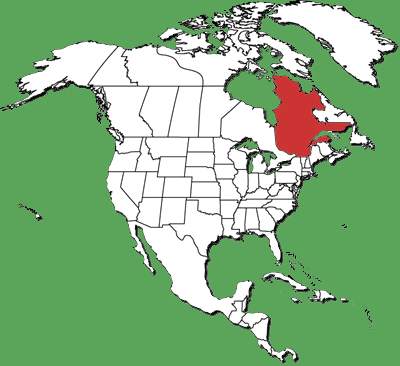
Circle the area on this map

B. With 1.9 million people, Montreal is Quebec's largest city and Canada's second largest.
C. Most Quebecers live in urban areas near the Saint Lawrence River, which is the primary drainage of the Great Lakes Basin. Champlain Sea is the name of the ancient saltwater body that deposited a layer of unstable clay which can spontaneously liquefy with little or no provocation.
A. Quebec is the only Canadian province whose population is mainly French speaking. French and English are the official languages of Canada and have equal status in the federal government. The French-speaking Quebecers are known as Quebecois.
D. The French realized the Saint Lawrence region was full of valuable fur-bearing animals, especially the beaver, an important commodity as the European beaver had been driven close to extinction. Eventually, fur traders nearly wiped out the North American species as well.